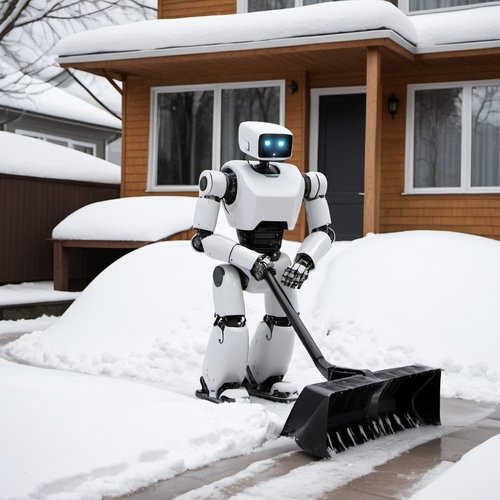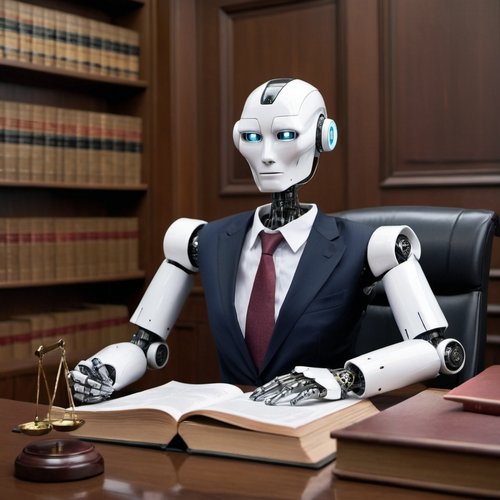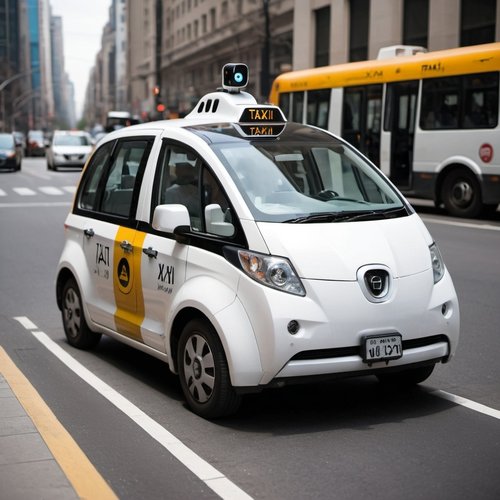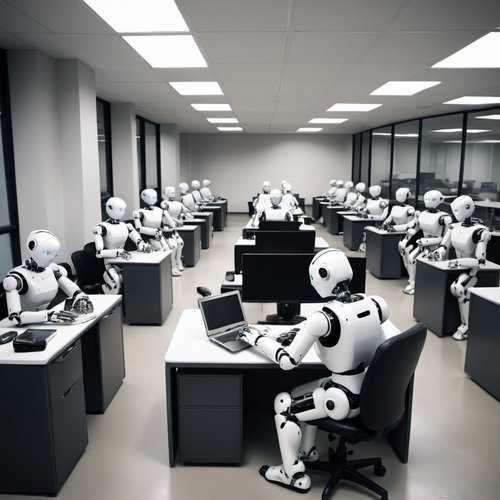The Impact Of AI On Jobs
Monday, 24 June 2024By Chris Yapp

Recently, Elon Musk claimed that AI was coming for all our jobs . Less apocalyptic, but still large is a report from Goldman Sachs that 300 million jobs were at risk from AI. My interest in the impact of technology on jobs goes back a long way, in fact to 1979. I sat in on an interview with Clive Jenkins, one of the most interesting characters in UK white collar union history. His book, the Collapse of Work was an interesting read at the time. Watching unemployment treble in the early 80s felt a vindication of his thesis. Yet in the long run we have a society with near full employment, even if less secure and with greater inequality. From time to time similar claims have been made over the Internet and e-commerce, for instance.
Yet what does it mean to say “40% of jobs are at risk of automation”, for instance.
The interest this time is that from the 1960s we have had waves of automation of blue collar and then white collar jobs. This time, the focus is on professional work. The jobs we expect to be impacted are in accountancy, medicine, law and so on.
In a previous post I outlined some thoughts on the interaction between technology and business models. To understand the impact of AI on jobs I believe that it makes sense to think about the business models of the professions rather than the specifics of the technology impact on specific jobs.

It may seem an extreme example, but consider a model for the legal profession where there a few “rock star” lawyers holding Taylor Swift brands, rewards and reputations with the majority on a “spotify for lawyers” eking out a living wage. This way access to the law may become more democratic and affordable, but less rewarding than now for the lawyers. It is what has happened after all in a lot of white collar domains. Look at the disparity that occurs with “mediafication” of a sector. The income multiples of the Celebrity chef, Gardener and so on compared to the rest is well documented. Also we do already have “ legal influencers” such as the “Secret Barrister”. I’m sure you can come up with other models.
Not withstanding my caveat on models in my previous post, I have used a simple mental model to try to understand how previous waves of automation have actually panned out.
An old colleague once told me that the difference between English and American was that in American; “ there ain’t a noun that can’t be verbed”.
So, take the 3 words, automation, information and transformation and we get, automate, informate and transformate.
The term informate was coined by the Harvard academic Shoshana Zuboff in the 1980s in her book “ In the age of the Smart Machine”.
One of the differences with digital automation from prior generations of technology is that information is created as a byproduct of automation. That information itself has a value. For instance, smart technologies in cars can give manufacturers post sales information on the performance of vehicles in the real world, valuable to R&D, insurance and servicing. An early example of this that I was introduced to was with automation of lifts ( elevators). One supplier noted that instead of waiting for a lift to breakdown and the customer calling a call centre, the lift could inform the call centre that it was close to failing and the call centre could schedule repairs with the customer at a convenient time. This change of business model allowed a further innovation, which is that if an engineer visited a site, the call centre could check other lifts in the vicinity, reducing costs, customer downtime with improved satisfaction, a real win-win.
For me, too much focus is placed on the “transformation of the medical professions through AI” rather than looking at the impacts of straight automation and information phases.

Previous waves of automation have automated tasks not roles. The argument with AI is that this time roles can be automated. It is worth being sceptical here. Let me illustrate the difference with a role we are all familiar with, the driver.
We can automate driving in a lane or changing lane and that is clearly demonstrable. To create a “driverless vehicle” we have to go further. For instance, we need to automate “ turn left in road works at traffic lights, in the rain with an emergency vehicle approaching, at dusk. Context matters.
Over the last 2 years there has been significant hype, but also progress in making useful AI systems. However, from my reading we are making progress faster in tasks than in roles. A previous post outlined my view here. If we do make significant breakthroughs in Generalizing AI, known as AGI, all bets are off, but I don’t see it ( yet!)
So, for AI to impact on the legal profession what we need to consider are the following:
- What tasks can be automated economically by AI? (automate)
- In automating legal processes what value is created by the information produced as a byproduct? How can this add value to legal services? (informate)
- What new roles can emerge that transform legal services? (transformate)
For instance, if we can automate drafting commercial contracts, how does the fee structure need to change? Can outsiders disrupt the current models, if incumbents are too conservative?

The growth of “ Big Data” has led to a shortage of a new specialism, “ data scientists”, in many disciplines. The combination of domain knowledge and technical skills has created some high powered high paying jobs in a range of disciplines.
An example in the automation of factories from a previous generation may be helpful here. A few hundred people worked on building a new factory that employed 1000’s of workers. Later, more people worked on the building of the location than worked on it on operation.
If you employ 100 graduates and 5 five of them make partners down the line, what happens if you only need 10 graduates to do the work?
I have asked more questions than offered solutions, because at this stage I believe that all is in play.. Spending a fortune on building an AI system is not investing in the future unless you have clarity on the future business model(s) and the skills and competencies of next generation professionals.
Caveat emptor and cui bono, come to mind.